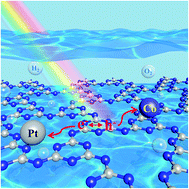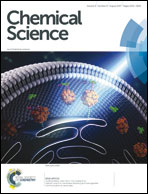Photocatalytic overall water splitting by conjugated semiconductors with crystalline poly(triazine imide) frameworks†
Abstract
Photocatalytic water splitting is an ideal pathway to produce hydrogen for the future energy supply due to the sustainability of solar energy and the mild reaction conditions. In the past four decades, many inorganic semiconductor photocatalysts have been studied for this purpose. In recent years, conjugated polymers, in particular covalent carbon nitride frameworks, have rapidly emerged as a new family of photocatalysts. However, the use of conjugated photocatalysts in overall water splitting in the absence of sacrificial agents has been much less reported. Herein, we used surface kinetic control to photocatalyze overall water splitting by a covalent carbon nitride semiconductor with a crystalline poly(triazine imide) (PTI) frameworks. Our study demonstrates that the loading of a Pt co-catalyst on the PTI surface plays the key role in inducing overall water splitting. The co-deposition of a cobalt species can effectively increase the photocatalytic activity and adjust the ratio of H2 and O2 produced, as well as enhancing the stability of the photocatalyst. The optimal sample with the dual co-catalysts shows an apparent quantum yield of 2.1% for the overall water splitting reaction.



 Please wait while we load your content...
Please wait while we load your content...